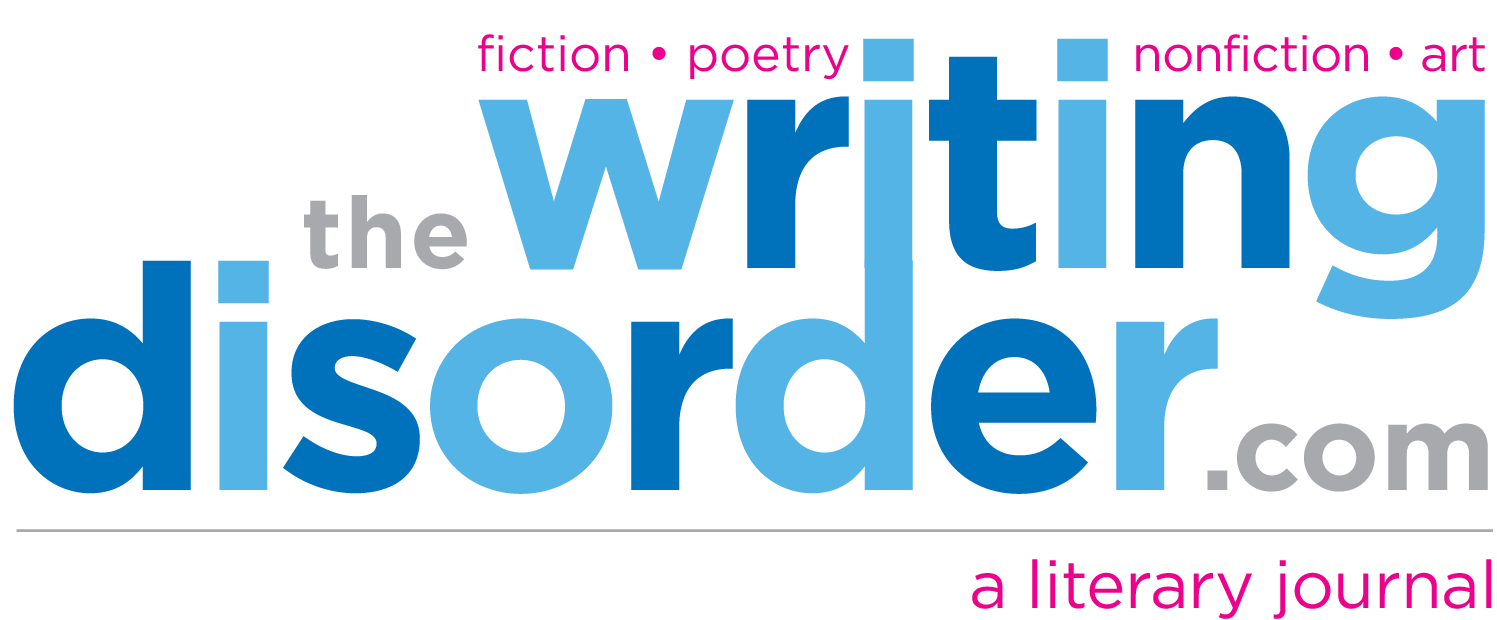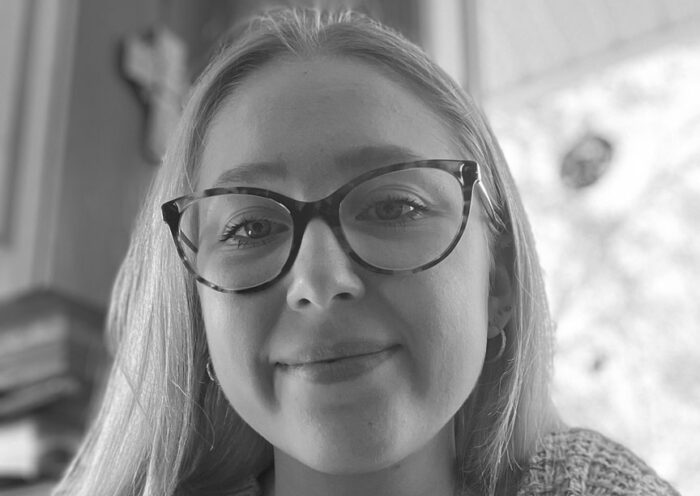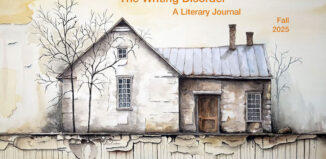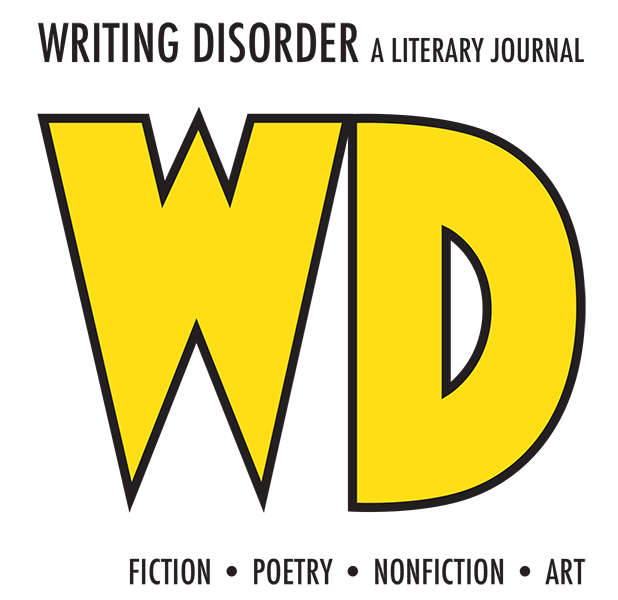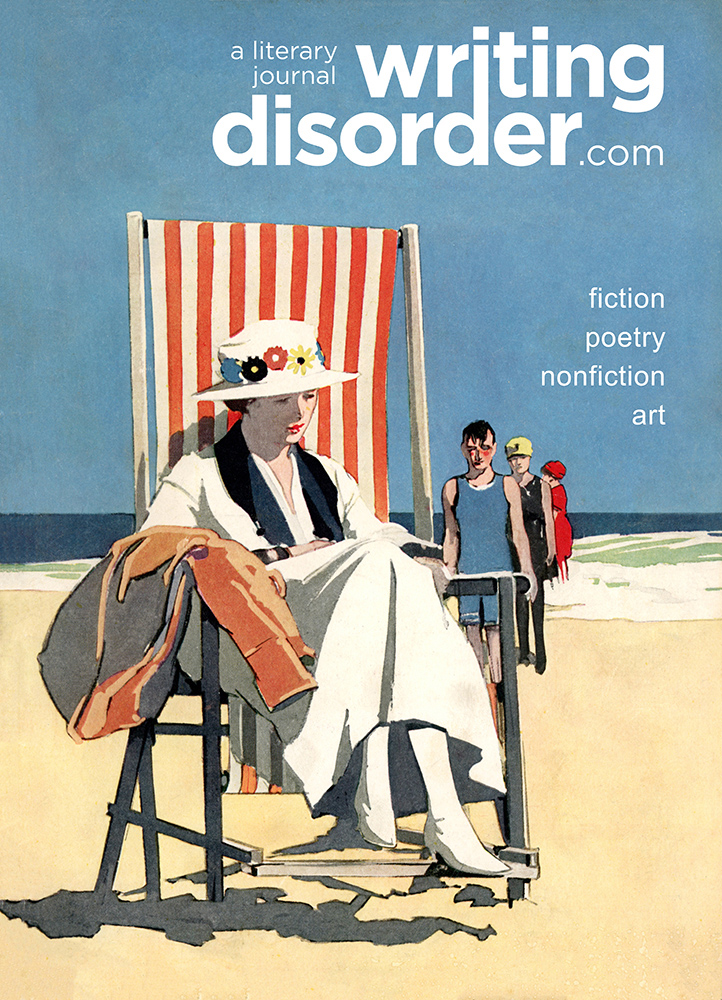Don’t Judge a Book by Its Happily Ever After
by Hannah Ackerman
There’s very little writing advice I’m willing to take as unarguable. Almost as long as I’ve been able to read, I’ve been trying to write, and as long as I’ve been trying to write, I’ve been trying to crack the code on what it means to be a writer. As it turns out, wanting to be a writer comes with an onslaught of suggestions and guidelines that are offered as helpful but more often seem to confuse and conflate the simple desire I started off with— I just want to write good stories. I struggle with common suggestions like “write what we know,”— if we all wrote what we knew, sci-fi would cease to exist as we know it. “Show don’t tell” is often useful, yet sometimes I find myself reading a book that is so overly descriptive, I want to throw it at a wall. “Write every day” is advice I should probably take to heart, yet I go days without opening a notebook or Word document, exchanging that writing time for binge watching reality TV. The only advice that I have always felt is most important, is that to write well, you have to read lots.
When 2020 came around and the world started to shut down, I was caught between an endless cycle of frequent doom-scrolling and scouring scholarly articles as I prepared myself to graduate university. In the midst of endless literary essays and widespread bleakness, I found myself in a predicament that I hadn’t expected given the state of the world— there was nothing I wanted to read anymore.
Finding myself in a situation where none of the books I had access to were appealing made the feeling of being locked down just that much more unnerving. I couldn’t stomach the dystopian novels I had grown to love in a post-Hunger Games world when I could barely handle the dystopia my own world seemed to be turning into. Gothic fiction had gone from something I was forced to read in an English class, to a favourite genre, to something I didn’t even bother to open. Books had gone from a comfort to another way to experience death, where characters’ lives were dependent on their circumstances, and the circumstances of the books I had loved previously all led the characters down dark paths I could no longer stomach. But still, I wanted to find ways to write and in order to do that I needed to find ways to read, or else I feared I would fade away into nothing more than a shell of the writer I one day hoped to become. At this overly dramatic point, romance books entered the scene.
My understanding of “romance” novels at the time involved front covers featuring men wearing ripped open billowing white blouses while swooning women in tight corsets draped themselves over them. I assumed there was always a pirate ship or grand manor involved and the only name I associated with the genre was “Fabio.” My idea of the romance genre was limited to the kind of romance books you saw at doctors’ offices or on spinning book racks at airports, ready to be picked up by bored travelers who needed something to pass the time. I’d eagerly signed up for a Jane Austen class during my undergrad, yet I would walk past the adult romance section in bookstores as if it didn’t exist. I had, at some point, allowed pre-conceived ideas of what romance novels were overshadow what the genre could bring me. It was as if I, an adult woman, could not read stories about adult women, lest I be caught admitting to wanting to read stories where women were safe and cared for, and loved most reverently by their significant other.
I bought my first romance book during those first long few weeks of the pandemic, when the news was overwhelmed by tragedy and unhappiness. The book was called The Unhoneymooners, written by author Christina Lauren, the combined name of writing duo Christina Hobbs and Lauren Billings. The bright yellow front cover promised me “heartfelt and funny,” two things I desperately wanted more of during a global pandemic. The book arrived late one afternoon, and just a few hours later, I had completely devoured it. Not once did I stop to refresh the online counter that showed how many people had passed from Covid already or open the app formerly known as Twitter to see the vitriol that was being spewed between people who had differing opinions on how protocol around the pandemic should go. The book was a reprieve from all things tragic and by the end of the day, I’d ordered 4 more.
Drastically different from the preconceived ideas I’d had of what constituted a romance novel, the book didn’t advertise any distressed damsel who needed an overly muscular man to swoop in and save the day by offering to marry her. Instead, The Unhoneymooners told the story of the realistic frustration of a woman named Olive who had been let go from her job in the biomedical sciences. She struggled with the fact her twin sister was seemingly more successful, and hated a man who had a habit of making her feel bad about her weight. She was sometimes funny and sometimes sad, and always close to a realistic idea of what a woman was when I thought of the women in my own life. The book concluded with the expected Happily Ever After, but by the time the story was coming to a close, it felt only right that Olive had figured out her dream career and met her perfect match. The plot had been full of common tropes and what may be considered cliché but instead of feeling trite or repetitive, it was comforting and left me feeling hopeful. I may not have been able to go outside, but I could cheer on this other girl as her life moved forward.
As a genre commonly targeted specifically towards women, romance novels are often belittled, considered lacking in substance, or focusing too much on topics deemed “not literary enough” for the consumption of the general public. Yet romance novels currently make up the biggest category of fiction sold in stores as well as the highest earning genre, coming in at approximately $1.5 billion dollars’ worth of sales in 2022[1]. The number of romance novels sold per year has seen a steady incline since 2020, with sales almost doubling between 2020 and 2021. It seems, just as I had, many others had turned towards a genre that promised Happily Ever Afters when the real world seemed to be offering anything but.
Freelance journalist and YA romance writer Jennifer Chen had a similar experience. A popular romance book had been gifted to her from a friend, she wrote[2], but had sat on her shelf collecting dust until a few days into her lockdown experience. In the book she found the sense of comfort she was lacking in her own pandemic-affected life. She found that there “was safety in the routine of knowing that every story I read ended happily; I didn’t have to wonder if the people I read about were hurting.” This was a sentiment I found echoed many of my own reasons for finding comfort in books like this. During a time when it felt dangerous to go to even the grocery store, surrounding myself in stories where the main character’s suffering was only ever temporary was the perfect antidote, even if it only lasted between the covers of a book.
Chen cites a second reason for feeling connected to romance books, as these books provide characters in which she was able to find her own emotions and struggles validated. Self, the website Chen writes under, recommends an article titled “19 Books That Have Helped People Through Some Seriously Tough Times[3]” as the follow-up to Chen’s article. Instead of a slew of self-help books, the article instead recommends everything from YA series Percy Jackson to fantasy classic The Lord of the Rings. The key similarity between the books listed in that article and the ones Chen lists in her article is that all provide an escape for their readers. Chen cites specific memories alongside the romance books she mentions— one is the book that got her through her dog’s cancer diagnosis, the other got her through acting as caretaker for her family during hard times.
While the pandemic familiarized me with new phrases such as “endemic,” romance novels gave me new phrases like “fake dating” and “forced proximity.” These new terms were used to label romance novels to tell the readers what they could expect to find happening between the two protagonists. Instead of leaning away from “clichés,” a word I had been told to stay away from as a writer, the romance authors I was reading were leaning right into them. To be labeled under a certain cliché, or trope, was like waving a bright flag at romance readers. You want a story of forbidden love? Julieta and the Romeos by Maria E. Andreu was there waiting to tell you a modern-day Romeo and Juliet tale. Ali Hazelwood, author of The Love Hypothesis and holder of a PhD in neuroscience, became known as the master of one of my favourite categories, “enemies to lovers.” The best example of this trope? Literary classic Pride and Prejudice.
Written in 1813 by British icon Jane Austen, Pride and Prejudice exists somewhere in the overlap between genre fiction and literary fiction. Years before phrases like “enemies to lovers” would have existed, Austen wrote a story that encapsulates so much of what people seem to love about the modern romance. Austen created the perfect female protagonist in Elizabeth Bennet. She’s tough but lovable, unwilling to settle down with someone she doesn’t love, nor with someone who is rude to her the way that Mr. Darcy, the wealthy handsome new neighbor, is. Elizabeth rejects a perfectly fine proposal from the dopey Mr. Collins in wait of something better. She makes the radical point that a woman might be more content to be alone than end up with someone who sees her first and foremost as a future mother, caregiver, and housewife. While Mr. Darcy blows his first chances with her, his grumpy demeanor provides the perfect setting for their “enemies to lovers” arc. Mr. Darcy’s icy behavior melts away to allow him to become the perfect match for Elizabeth; it is, without a doubt, a happily ever after.
Originally titled First Impressions, the reputation of Pride and Prejudice as a romance novel offersitself as an excellent example of the gap between literary romance and genre romance, as well as the stereotypes surrounding both. While Elizabeth and Mr. Darcy walk the fine line between love and hate, Pride and Prejudice walks the fine line between “acceptable” romance novels and genre romance novels that have their literary worth called into question. Yet both fall into the same category of being written by women for women. First Impressions may not have stuck as the title for the novel, but I’ve always liked it for the book and for the way I seemed to interact with romance novels before I gave them a proper chance. The first impressions of romance novels seemed to be one that puts these stories down, that shamed the idea of a Happily Ever After.
My copy of Pride and Prejudice is shelved right above my copy of a book called Icebreaker, originally released in 2022 on Amazon by debut author Hannah Grace. Icebreaker is a college romcom that became so popular through Amazon’s self-publishing platform that it was picked up by a traditional publisher and rereleased in bookstores almost a year after its original release. The story follows college hockey player Nathan and college ice dancing star Anastasia. Similar to Pride and Prejudice’s Mr. Darcy and Elizabeth Bennet, Nathan and Anastasia fight back and forth through the book between love and hate. Similar to Jane Austen when she originally published Pride and Prejudice, Icebreaker author Hannah Grace was never expected her book to reach a such wide audience. It was one of the 1.4 million books that are self-published through Amazon’s Kindle platform every year[4]. With numbers like that, how could any self-publishing author expect to find themselves selling mass numbers of their book, let alone ending up with a book deal? Yet this enemies to lovers romance book has now ended up selling over one hundred thousand copies in the UK alone. Even in the vast world of self-publishing, romance novels hold the crown as the most successful genre. Everyone, it seems, is attracted to a happy ending.
Four years later and a multitude of romance novels lining my shelves, I proudly consider myself a lover of romantic fiction. Romance novels were what swept in to save the day when love and joy had seemed to take a backseat to tragedy and loss. The brightly coloured spines stand out against the stark white and neutral browns that are more likely to make up the covers of the literary fiction books I’ve stacked with them. While I don’t see either genre as better or more valuable than the other, the days of jumping to defend why I’ve taken up reading romance novels is gone. In the early days of my newfound love, when I explained the plot of a romance book I willingly stayed up all night to finish, I found myself needing to prove why it was worth my time or energy. I would claim it was nice to take a break from the heavy classics I was reading for school, that these books were quicker and easier to read, like candy for my brain. While some of these things were true— I finished romance novel Beach Read much quicker than I finished Paradise Lost— the most consistent truth of my new reading habits was that I simply enjoyed reading these books.
Beach Read, written by author Emily Henry, uses its own main character to address the questions of why romance novels are so quick to be written off as simple or unliterary. Main character January Andrews is a romance writer experiencing serious writer’s block for the first time in her career. She’s broke, forced to live in the house her now deceased father bought with his mistress, and finds herself living next to a literary fiction writer who gives off the impression that he doesn’t understand why she would write romance. January, frustrated by the difference in treatment she experiences compared to that of her neighbor, speaks to the validity of her own genre, stating that “if you swapped out all of [her] Jessicas for Johns, do you know what you’d get? Fiction. Just fiction. Ready and willing to be read by anyone, but somehow by being a woman who writes about women, I’ve eliminated half the Earth’s population from my potential readers.” Beach Read itself is shelved as romance but contains a story that reflects on memories of families of former cult members and discusses the grief of losing a parent who let you down, yet is still looked down upon for existing within a genre that is given less merit for every bubble- gum pink book cover it releases.
In the midst of all her writer’s block, there’s a moment where January looks out her kitchen window to find that she can see her neighbour, a fellow writer, pacing in front of his open laptop. She’s able to see the frustration lining in his face and is reminded that once genre is put to the side, “when it came down to it [he] was still pacing in the dark, making shit up like the rest of us.” It’s a statement that gets me through my own writing and one that seems to fit my readings habits too. When it all comes down to it, I’m still sitting with a book, looking to feel a little better, just like everyone else.
BIO
Hannah Ackerman is a writer from Calgary, Alberta. She has a degree in English literature and will graduate with an MFA in Writing from the University of Saskatchewan this upcoming fall. She is currently working on her first book, a gothic novel about art, grief, and ghosts.
Works Cited
Austen, Jane. Pride and Prejudice. Penguin Classics. 1996.
Brenza, Amber. “19 Books That Have Helped People Through Some Seriously Tough Times.” SELF, January 18, 2018. https://www.self.com/gallery/read-these-books-when-things-get-tough
Chen, Jennifer. “I Highly Recommend Romance Novels if You’re Really Going Through it Right Now.” SELF, November 16, 2022. https://www.self.com/story/romance-novels-mental-health-essay
Curcic, Dimitrije. “Romance Novel Sales Statistics.” Words Rated, October 9, 2022. https://wordsrated.com/romance-novel-sales-statistics/
Henry, Emily. Beach Read. Berkley. 2020.
Lauren, Christina. The Unhoneymooners. Gallery Books. 2019.
[1] https://wordsrated.com/romance-novel-sales-statistics/
[2] https://www.self.com/story/romance-novels-mental-health-essay
[3] https://www.self.com/gallery/read-these-books-when-things-get-tough
[4] https://wordsrated.com/amazon-publishing-statistics/#:~:text=Self%2Dpublishing%20on%20Amazon&text=Amazon%20releases%20over%201.4%20million,publishing%20figures%20is%20much%20higher.
